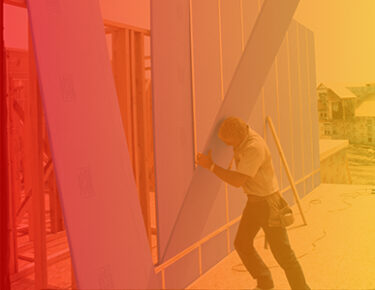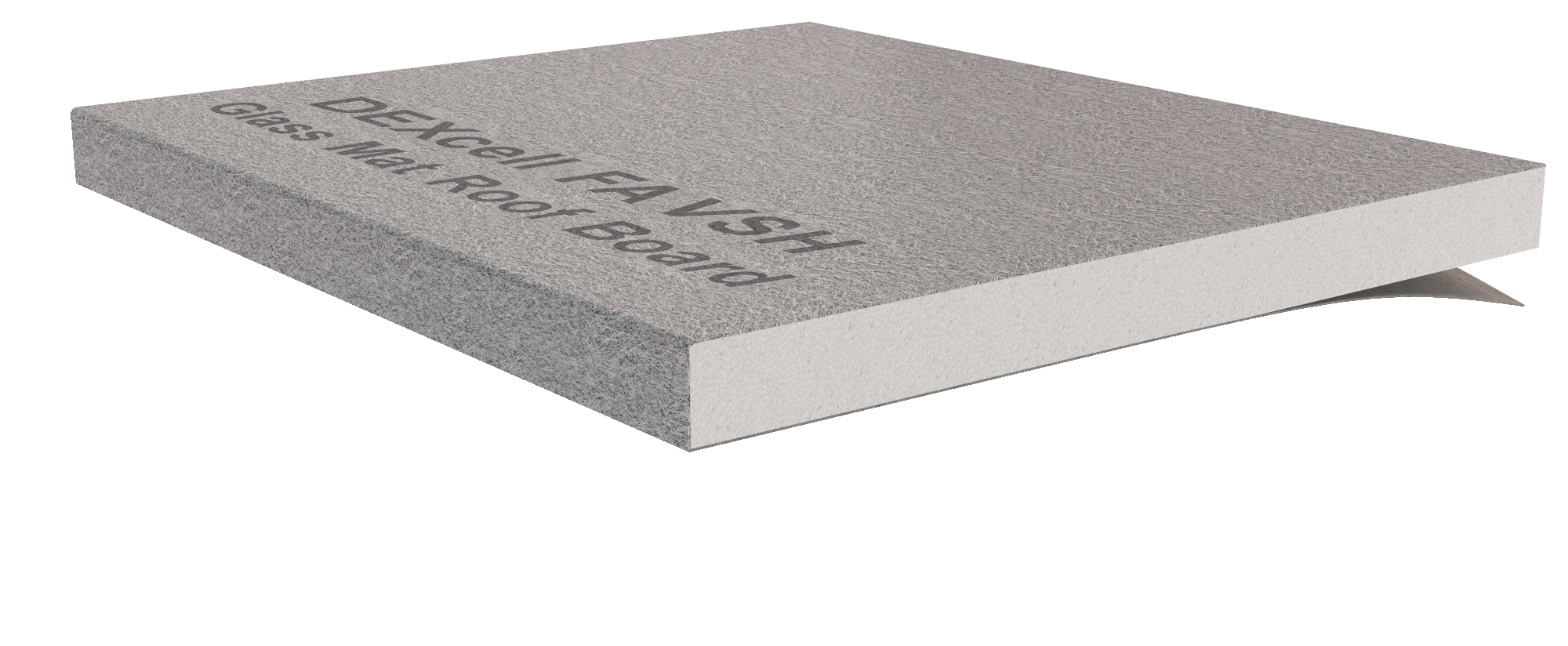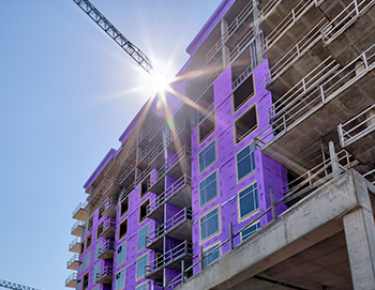 Roofing Systems
Roofing Systems
How to protect your low-slope commercial roof from human impact
Learn how DEXcell products give roofs a stout surface that can stand up to foot traffic from maintenance and repair workers

Today’s low-slope commercial roofs house everything from HVAC units and solar panels to green roof planted areas and skylights, so it’s important to protect the roof from the daily impact of human traffic from service technicians, electricians and plumbers doing maintenance and repairs.
Weather events, such as severe hail, may grab attention, but damage caused by routine human traffic can also pose a risk to the integrity of the roof assembly.
DEXcell® roof coverboard, exclusively provided by National Gypsum Company, can help extend roof life by increasing puncture resistance and modulating membrane temperature fluctuations.
What are the risks from human traffic to commercial roofs?
When it comes to roof protection, there’s a risk of damage not just from people walking on a low-slope roof for maintenance and repairs but also because of the tools and equipment they bring to get the job done. And they may access the roof monthly for routine maintenance, seasonally to inspect for roof hail damage or annually for cleaning.
What qualifies as a low-slope roof?
Low-slope roofs have a gentle pitch, typically with a slope of less than 3-in-12. In other words, for every horizontal foot, the vertical rise of the roof is 3” or less, which means they provide a drainable, safe and accessible work surface.
Here are some examples of what can go wrong during rooftop maintenance and repair work:
- A dropped hammer can cause punctures.
- A leftover fastener inadvertently stepped on can poke a hole in the membrane.
- Pressure washers can get dragged across the surface and create abrasions.
Why use DEXcell roof coverboard on low-slope commercial roofs?
DEXcell roof coverboard can help extend the life of a roof in single-ply and multi-ply installations on low-slope roofs by providing a smooth, dense surface for the membrane.
Coverboard benefits include:
- Reliable substrate for membrane installation
- Durability
- Impact resistance
- Fire resistance
- Wind uplift resistance
- Thermal barrier
- Vapor barrier
- Prevention of bubbling and blistering in hot asphalt installations
Roofing industry associations recognize the value of using coverboard. The National Roofing Contractors Association has recommended coverboards since 2000 to provide added roof insulation support in the event of facer delamination, powder, cupping, shrinkage and edge cavitation. The NRCA and the Midwest Roofing Contractors Association have recommended using a noncombustible coverboard since 2006.

Which DEXcell coverboards help protect roofs from foot traffic and maintenance mishaps?
National Gypsum Company provides four DEXcell products to cover the full range of commercial roofing.
Three DEXcell roof coverboard products, manufactured by Gold Bond Building Products, LLC, have gypsum cores and different levels of impact resistance.
- DEXcell® Glass Mat Roof Board: Features coated fiberglass mat facers and a moisture-resistant gypsum core. Use on mechanically attached and metal roof systems and wood shake underlayment.
- DEXcell FA™ Glass Mat Roof Board: Includes heavy-duty, coated fiberglass facers and a moisture-resistant gypsum core. Use on fully adhered single-ply membranes, cold-applied modified bitumen, metal, fluid- applied and spray foam. Also ideal for the roof side of parapet walls.
- DEXcell FA VSH™ Glass Mat Roof Board: Features a reinforced gypsum panel with enhanced moisture resistance in the core and heavy-duty, coated glass mat facers. Approved for single-ply and multi-ply assemblies meeting Very Severe Hail classification.
The fourth product is DEXcell® Cement Roof Board, manufactured by PermaBASE Building Products, LLC, is made of Portland cement and is a lightweight aggregate with heavy-duty fiberglass-mesh facers. It’s ideal for high moisture areas and can be used with fully adhered, mechanically attached and ballasted roofs using single-ply membranes, modified bitumen, fluid-applied, built-up roofing, spray foam and metal.
Because they are high density, DEXcell roof coverboards also have acoustical benefits and can help roof assemblies achieve higher Outdoor-Indoor Transmission Class ratings.
Want to learn more? Take our on-demand continuing education course “Advantages of Using Cover Boards in Low-Slope Roofing Assemblies.”
Be the first to hear of new NGConnects blog posts by subscribing here for early access.
Related Blog Posts

Enhancing commercial roof performance with DEXcell Cement Roof Board
Discover how the versatility of DEXcell makes it suitable for nea...
Read MoreRelated Podcasts

Episode 3: Key insights into area separation wall use and construction
From fireblocking and repairs to doors and plumbing, advance your...
Listen Now










